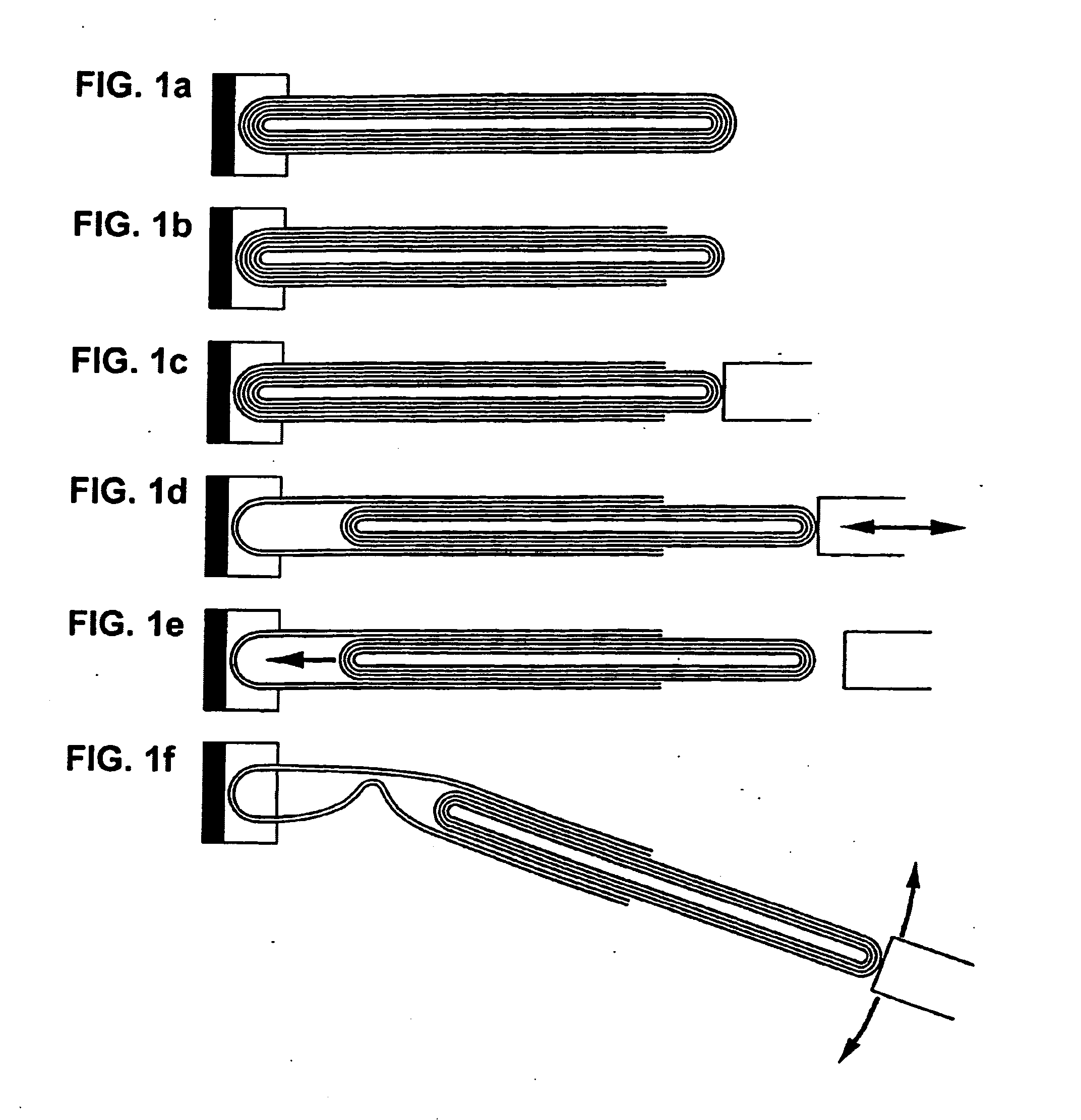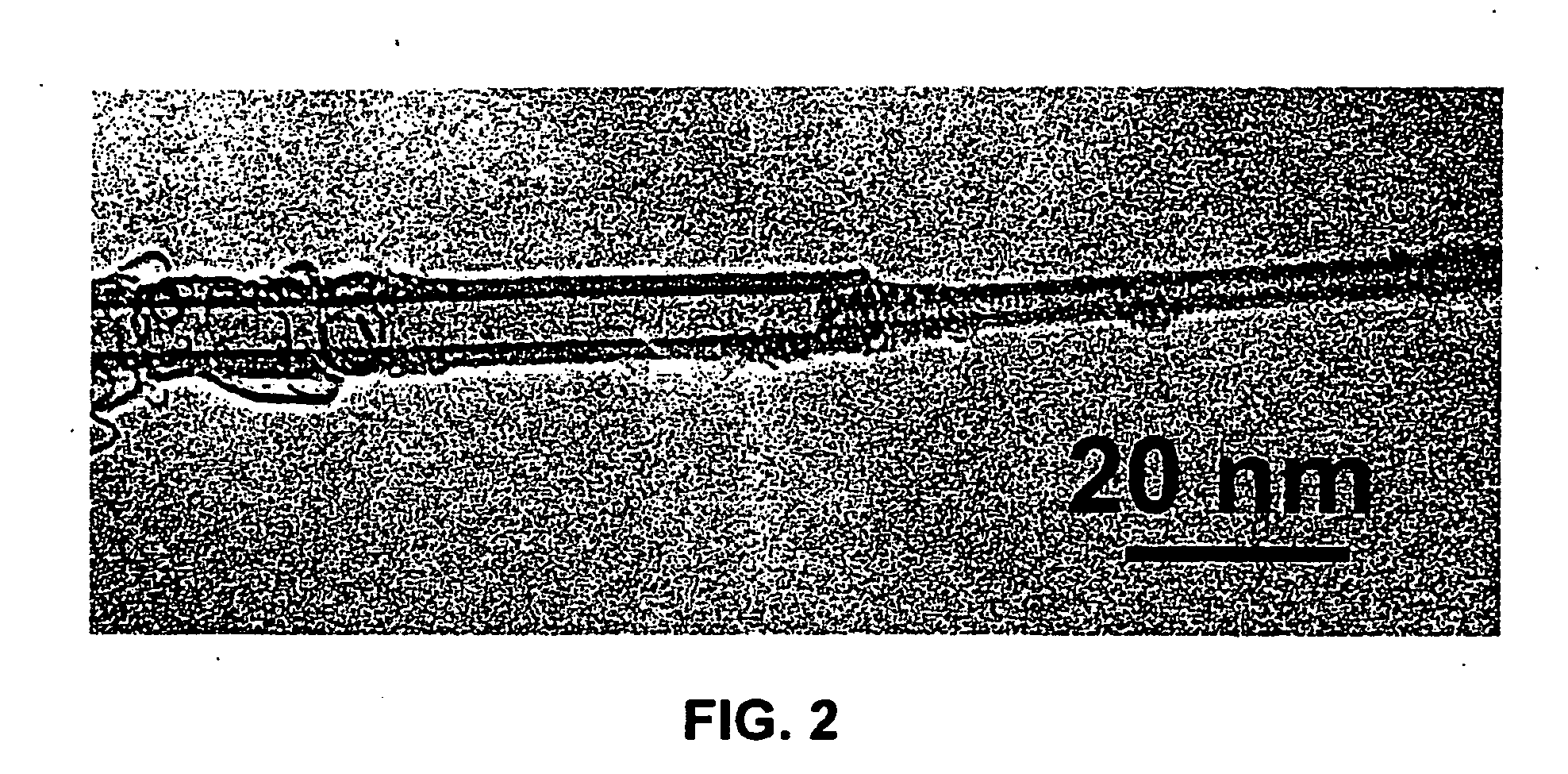Telescoped multiwall nanotube and manufacture thereof
a nanotube and telescopic technology, applied in the field of low friction, nanoscale bearings from multi-wall nanotubes, can solve the problems of difficult selective contact only of the core tube, the common sealing end of the cap cap, and the inability to demonstrate controlled and reversible telescoping of mwnts
- Summary
- Abstract
- Description
- Claims
- Application Information
AI Technical Summary
Benefits of technology
Problems solved by technology
Method used
Image
Examples
Embodiment Construction
[0018] Before the invention is described in detail, it is to be understood that unless otherwise indicated this invention is not limited to particular materials, components or manufacturing processes, as such may vary. It is also to be understood that the terminology used herein is for purposes of describing particular embodiments only, and is not intended to be limiting.
[0019] It must be noted that, as used in the specification and the appended claims, the singular forms “a,”“an” and “the” include plural referents unless the context clearly dictates otherwise. Thus, for example, reference to “a nanotube” includes a single nanotube as well as two or more nanotubes, “a shaping electrode” includes a single shaping electrode as well as an assembly of two or more shaping electrodes, “a layer” may be a single layer or may comprise two or more layers and the like.
[0020] In this specification and in the claims that follow, reference will be made to a number of terms that shall be defined...
PUM
| Property | Measurement | Unit |
|---|---|---|
| diameter | aaaaa | aaaaa |
| diameter | aaaaa | aaaaa |
| inner diameter | aaaaa | aaaaa |
Abstract
Description
Claims
Application Information
 Login to View More
Login to View More - R&D
- Intellectual Property
- Life Sciences
- Materials
- Tech Scout
- Unparalleled Data Quality
- Higher Quality Content
- 60% Fewer Hallucinations
Browse by: Latest US Patents, China's latest patents, Technical Efficacy Thesaurus, Application Domain, Technology Topic, Popular Technical Reports.
© 2025 PatSnap. All rights reserved.Legal|Privacy policy|Modern Slavery Act Transparency Statement|Sitemap|About US| Contact US: help@patsnap.com



